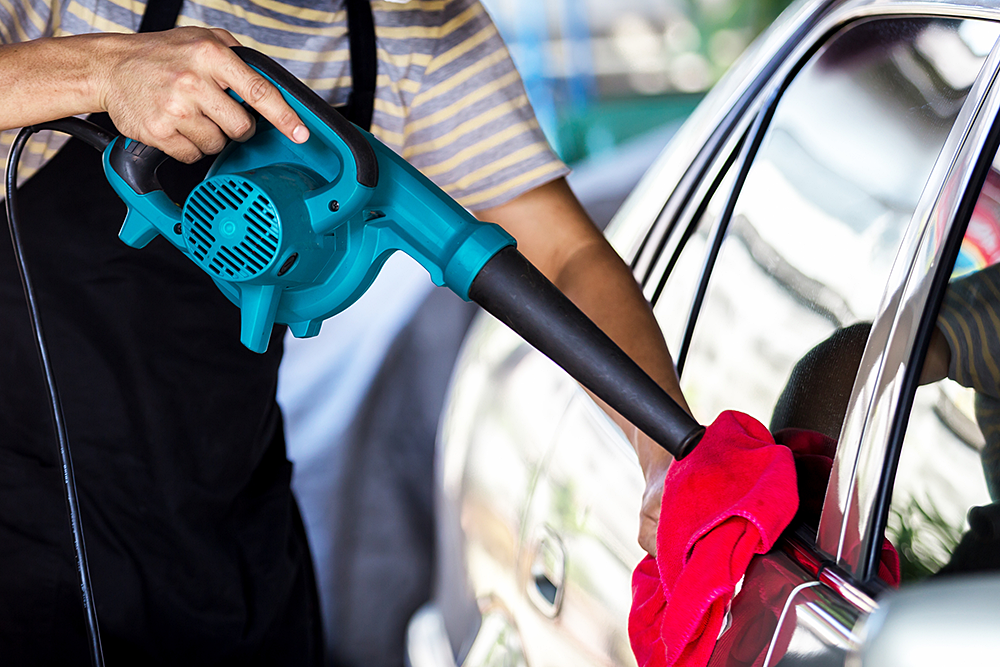Choosing a carwash that meets your vehicle's needs

While some drivers may think every drive-through carwash is created equal, other vehicle owners who have had side mirrors blasted off by a roller would argue differently. So how do you choose the best automatic facility?
“It’s almost like finding a good dentist or doctor,” said Eric Wulf, Chief Executive Officer for the International Carwash Association. “You can’t tell from the building.”
The ICA breaks down carwash facilities by the kinds of cleaning technology offered:
1) Friction: Brushes and rollers are used along with water and chemical cleaner mixtures to wash the car.
2) No Touch: High temperature, high-pressure water is used along with chemicals to wash the car without the use of brushes or rollers.
3) Dual cleaning facilities that employ both brushes and high-pressure cleaning.
4) Self-cleaning facilities that offer high-powered sprayers.
Maintenance means more than oil changes and tune-ups, Wulf said. Clean vehicles provide better value for trade-in or resale.
“Friction” facilities are the most common types of carwash facilities, according to Wulf. Why? And what about those who’ve lost a mirror or who’ve gotten chipped paint as the result of an out of control roller?
According to Wulf, technological advances in the 1980s made equipment better and safer for vehicles. Nylon brushes, which tended to damage vehicle paint, were virtually eliminated. They were replaced by foam fabric brushes and rollers that are much gentler on vehicle surfaces.
Advanced systems used in today’s machines sense the profile of a vehicle and minimize risk of damage, Wulf said. One note of caution: Vehicles that have been customized with bike racks, specialized wheel rims and other non-factory accessories.
“Carwashes are designed to wash the most common vehicles, the most common profile of vehicles,” Wulf said. “If people have made any changes to the vehicle, ask the carwash manager if there is a potential for problems.”
Standard carwash facilities are not intended for extremely oversized vehicles or those with heavy, caked on mud and dirt. Wulf suggested using a self-wash facility instead.
Also, the Clean Water Act required carwash operators to install a water treatment system to prevent chemicals from seeping into ground water. Some facilities recycle as much as 80 percent of their water.
Wulf offered these carwash facts and suggestions:
- “No Touch” may be appropriate for lightly soiled surfaces and owners who prefer that no brush come in contact with the vehicle surface.
- “Friction” facilities employ soft brushes to wipe away grime.
- Oversized vehicle or vehicles soiled with heavy mud should consider utilizing “self-cleaning” facilities.
- Eco-friendly carwash facilities recycle as much as 80 percent of their water. You may find these facilities by visiting icawatersavers.org. The registry lists more than 900 facilities.
- Car washes protect an owner's investment. According to auto trade-in experts such as Kelley Blue Book, cars in excellent mechanical condition and appearance can be valued as much as $1,500 higher than those in good or fair condition.
- Professional wash facilities use about 50 percent less water than at-home washes and must comply with laws for piping dirty water to treatment facilities or into state-approved drainage facilities.
- At-home car washes pollute the environment as soap and road grime (oil, tar, dirt) end up in storm sewers that flow into lakes, streams and rivers.
“If the facility is clean and people are friendly that shows the owner cares about the business and customers and it says a lot about the business,” Wulf said.